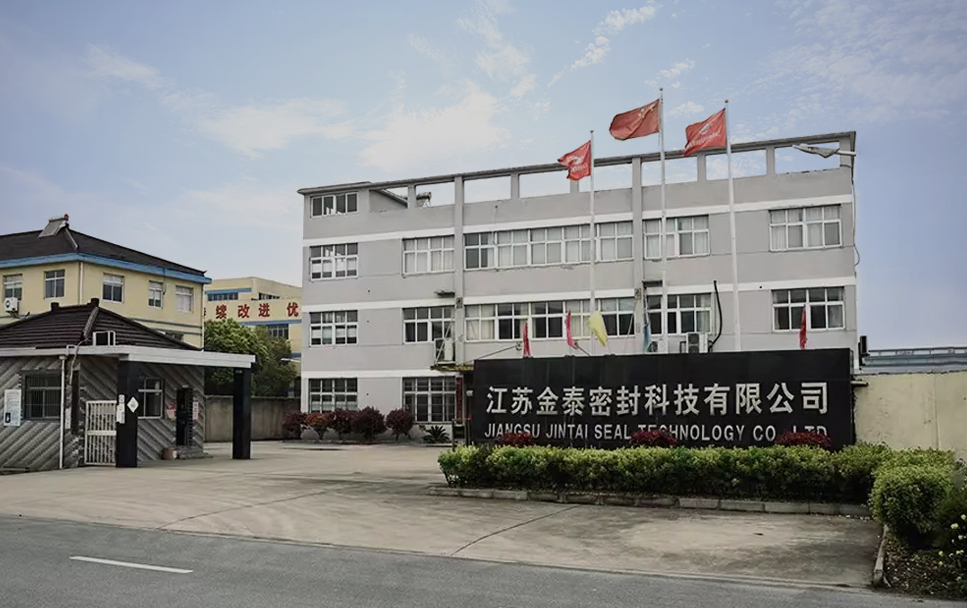Comprehensive Understanding of Graphite Gland Packing Technology Graphite gland packing represents a significant advancement in sealing technology, of...
READ MORE
-
-
Graphite gland packing is a cornerstone in industrial sealing, prized for its exceptional performance in demanding environments. This article delves ...
READ MORE -
High-temperature metal gaskets are critical components in industries such as oil & gas, power generation, chemical processing, and aerospace. They...
READ MORE -
Gaskets play a critical role in industrial sealing, ensuring leak-proof connections in high-pressure and high-temperature environments. Among the most...
READ MORE -
Sheet Gasket for High Temperature Applications: Best Materials and Uses High-temperature environments demand durable sealing solutions to prevent leak...
READ MORE
How to ensure the sealing performance and durability of graphite gaskets during the preparation process?
In the preparation process of graphite gaskets, in order to ensure its sealing performance and durability, a series of process steps and control points need to be strictly followed. The following are specific measures:
1. Raw material selection and quality control
Graphite material selection: Select graphite materials with high purity and good uniformity. Graphite materials with low purity are prone to oxidation, hardening, etc., which affect the service life and sealing performance of the gasket. At the same time, the uniformity of graphite materials has a direct impact on the flatness and precision of the finished product, which in turn affects the sealing effect.
Additive selection and ratio: During the preparation process, add appropriate amounts of additives (such as binders, lubricants, etc.) as needed to improve the physical properties and processing performance of the gasket. The type and ratio of additives need to be strictly controlled to ensure the stability of the gasket quality.
2. Processing technology control
Crushing and mixing: Crush the graphite raw materials to a certain fineness (such as 45 mesh or above) to ensure that the particle size is uniform and fine, which is conducive to subsequent sintering and molding. At the same time, the graphite powder and additives are mixed evenly in proportion to avoid agglomeration.
Molding and drying: Mechanical pressure or mold molding technology is used to press the mixture into a blank of the desired shape. During the molding process, the pressure parameters and time must be strictly controlled to avoid excessive pressure causing microcracks inside, or too long time affecting the effect. After molding, drying treatment is carried out to remove the liquid in the mixture, and the drying speed is controlled to prevent the product from cracking.
Sintering treatment: The dried blank is placed in a high-temperature furnace for sintering treatment. By controlling the sintering temperature and time, the graphite particles are more closely bonded to improve the density and strength of the gasket. During the sintering process, it is necessary to prevent excessive sintering from causing graphite oxidation and affecting the performance of the gasket.
Subsequent processing: The sintered gasket needs to undergo processing processes such as trimming, cutting and grinding to meet the specified size and surface roughness requirements. These processing steps help to further improve the sealing performance and appearance quality of the gasket.
3. Surface treatment and coating technology
Surface treatment: Use appropriate surface treatment methods (such as polishing, sandblasting, etc.) to improve the surface finish and sealing of the gasket. During the surface treatment process, various pollutants should be avoided from adhering to ensure the quality of the processed products.
Coating technology: Coating a layer of anti-corrosion, wear-resistant or high-temperature resistant coating on the surface of the gasket can further improve the durability and service life of the gasket. The selection of coating and coating process should be determined according to the specific use environment and requirements.
4. Quality inspection and control
Process inspection: Quality inspection is carried out at various stages of the preparation process, such as raw material inspection, mixed material inspection, blank inspection, etc., to ensure that the quality of each link meets the standard requirements.
Finished product inspection: The appearance quality, size, hardness and other performance indicators of the produced graphite gasket are inspected to ensure that the product meets the relevant standards and requirements. Unqualified products need to be reworked or scrapped.
What are the different performance requirements for graphite gasket seals in different application fields?
There are significant differences in the performance requirements for graphite gasket seals in different application fields. These differences mainly depend on factors such as working conditions, medium characteristics, and safety standards in each field. The following is a detailed analysis of the sealing performance requirements of graphite gaskets in several typical application areas:
1. Petrochemical industry
High temperature and high pressure environment: In petrochemical equipment, many processes need to be carried out under high temperature and high pressure conditions. Therefore, graphite gaskets need to have good high temperature resistance and pressure bearing capacity to ensure that they can maintain a stable sealing effect in high temperature and high pressure environments.
Chemical corrosion resistance: There are many types of petrochemical media, including various acids, alkalis, salts and organic solvents. These media are often highly corrosive, requiring graphite gaskets to have good chemical corrosion resistance to prevent the media from eroding and damaging the gaskets.
Sealing reliability: Due to the continuous operation of petrochemical equipment and the flammable and explosive nature of the medium, the sealing reliability of graphite gaskets is extremely high. Any tiny leak may lead to serious safety accidents and environmental pollution.
2. Aerospace field
Lightweight and high strength: Aerospace equipment has strict weight restrictions, so graphite gaskets are required to reduce weight as much as possible while ensuring sealing performance. At the same time, the graphite gasket also needs to have high mechanical strength to withstand various mechanical loads during flight.
Low temperature resistance: Some aerospace equipment needs to operate in extremely low temperature environments, such as liquid hydrogen and liquid oxygen rocket engines. This requires graphite gaskets to have good low-temperature resistance to ensure that they can maintain a stable sealing effect in low-temperature environments.
Radiation resistance: In nuclear-powered spacecraft, graphite gaskets also need to have the ability to resist nuclear radiation to prevent radiation damage and performance degradation to the gasket material.
3. Electric power industry
High temperature resistance: Many equipment in the power industry (such as steam turbines, boilers, etc.) need to operate in high temperature environments. Graphite gaskets need to have good high temperature resistance to prevent thermal expansion, thermal stress and other problems caused by high temperatures to ensure the sealing effect.
Conductivity: In some power equipment, graphite gaskets also need to have a certain degree of conductivity to conduct electricity or discharge static electricity.
Aging resistance: Power industry equipment usually requires long-term stable operation, so graphite gaskets need to have good aging resistance to extend service life and reduce maintenance costs.
4. Nuclear energy industry
High radiation environment: Graphite gaskets in nuclear energy equipment need to withstand strong radiation environments, so they must have excellent radiation resistance.
Extremely high temperatures: In high-temperature environments such as nuclear reactors, graphite gaskets need to be able to maintain stable sealing performance to prevent the leakage of radioactive materials.
Strict safety standards: The nuclear energy industry has extremely high requirements for safety standards, and graphite gaskets need to comply with strict safety regulations and certification requirements.

 Eng
Eng  русский
русский












